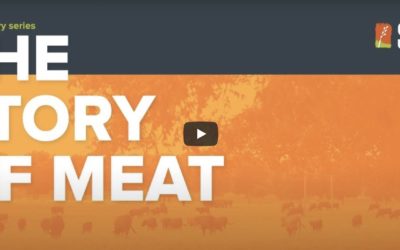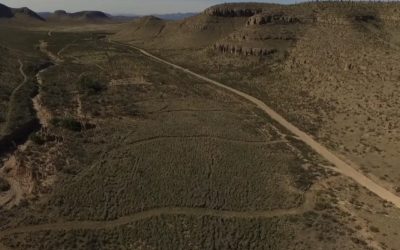Wolf Species Rebounds in Southwest, Angering Ranchers
The success of the Mexican gray wolf reintroductions is great news. Limited wolf hunting would change wolf behavior, making wolves less of a nuisance, according to ranchers quoted in the article below. Wolf advocates should get onboard with this.
NOTE: this article was originally published to WSJ.com on April 7, 2020. It was written by Jim Carlton.
The Mexican gray wolf’s population has reached record levels, sparking a fight between environmentalists and some locals
The Mexican gray wolf has rebounded to its highest numbers in the American Southwest since its near extinction a half-century ago—to the delight of environmentalists but angst of some ranchers.
Considered the most endangered of the world’s wolf species, the Mexican gray wolf disappeared from its native habitat in the southwestern U.S. and northern Mexico in the 1970s due largely to hunting and trapping. They remained out of the wild until 1998, when 11 wolves raised under a captive breeding program run by the U.S. Fish and Wildlife Service were released in the mountains of eastern Arizona.
Since then, the Mexican gray wolf has been on an upward trajectory—reaching a record 163 in the Southwest in 2019, 24% higher than the previous year and the 10th straight year of increases, according to the Mexican Wolf Interagency Field Team, a task force of various government agencies.
Federal wildlife officials say the higher numbers come after recovery efforts that have included placing captive-born pups in dens to be raised by wild adults and expanding areas where the animals are released. The wolves now mostly inhabit a mountainous region on the border of Arizona and New Mexico, living in 42 different packs.
“This is really encouraging news at a time when we all need some encouraging news,” said Bryan Bird, Southwest program director for Defenders of Wildlife, an environmental advocacy group. “It’s a pleasant surprise to see the population increase by this much.”
But ranchers in the region say the wolves have decimated their herds, taking down hundreds of calves and other livestock over the past two decades. “They have had a catastrophic impact on ranchers in the wolf recovery zone,” said Caren Cowan, executive director of the New Mexico Cattle Growers’ Association. “One rancher reports losing a cow or calf every other day.”
Ms. Cowan and other advocates for ranchers have argued for limited hunts of the wolves and higher payments by the federal government for the loss of a cow or calf.
“If they could hunt the wolf, it would change their behavior,” Ms. Cowan said. But environmentalists say the Mexican gray wolf numbers remain far too low for that.
Mr. Bird said environmentalists have worked with ranchers to come up with techniques to deter wolves, such as having hired riders chase them off—but Ms. Cowan said many of those are ineffective.
“Generally, the Mexican gray wolf has become identity politics,” Mr. Bird said. “You get the entrenched camps on both sides of the issue.”
The conflict reflects the tensions that have played out in the northern Rocky Mountains since a related species, gray wolves, were reintroduced there in 1995. The predator’s population has grown to more than 1,500, expanded their range across much of the Pacific Northwest and wreaked so much damage to livestock that hunting seasons have been opened in states including Idaho and Wyoming.
Even with their resurgence, the Mexican gray wolves are in a far more tenuous position, wildlife biologists say. One threat they face is inbreeding, because their numbers are so concentrated geographically, Mr. Bird said.
As a result, he and other advocates are pushing for federal authorities to relocate the wolves in more dispersed locations, such as northern Arizona and the southern Rockies of New Mexico.



